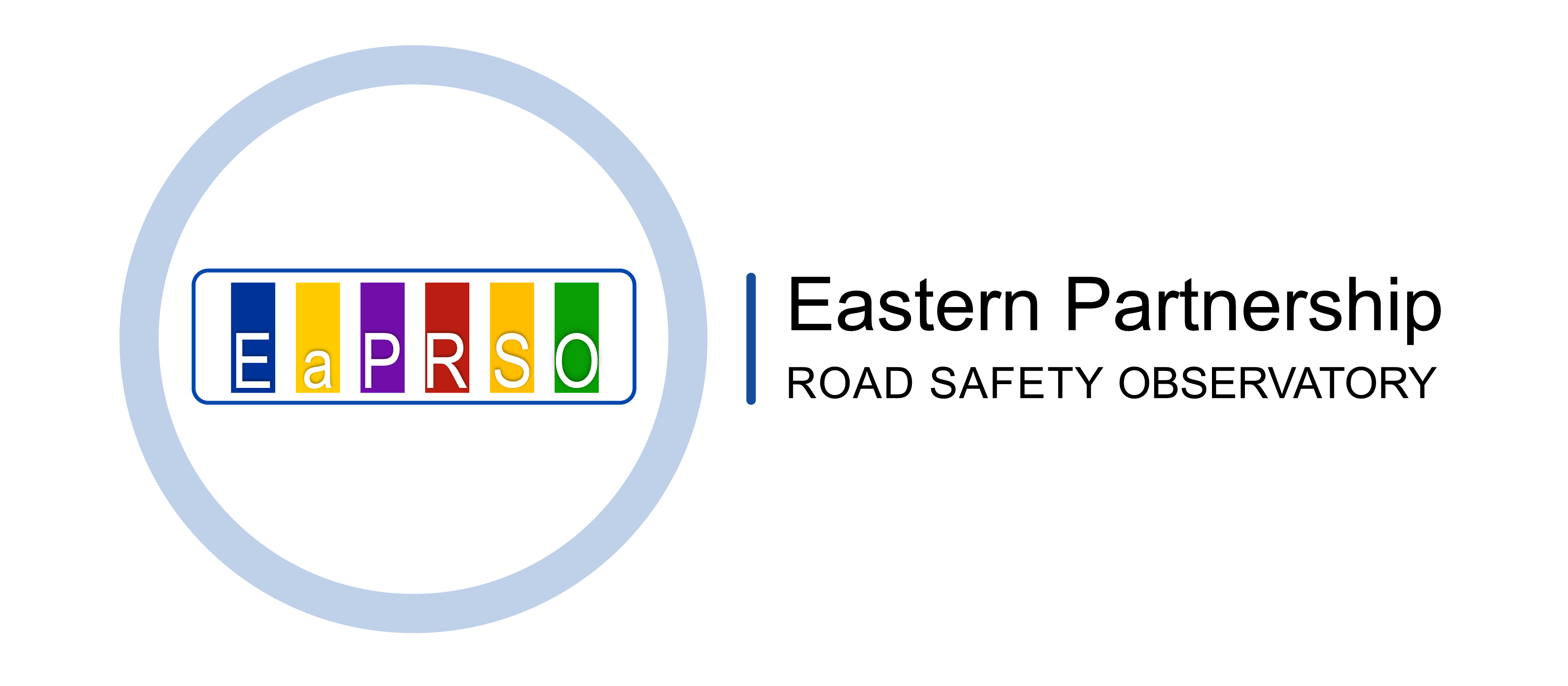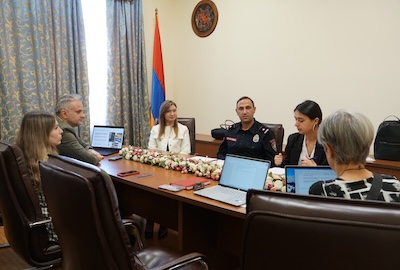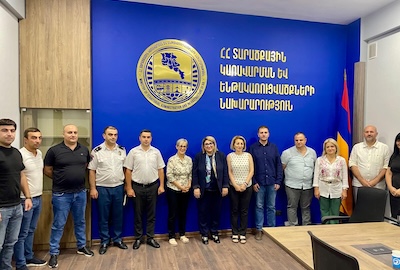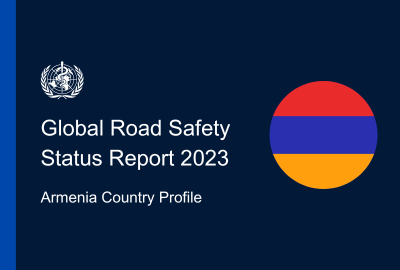This case study from Armenia shows how data was used to identify and inform road safety improvements at Arin Berd roundabout in Yerevan, and how continuous data monitoring is being used to measure the effectiveness of the interventions and guide further work.
Between 2021-2022, a group of local and international partners implemented a project aimed at upgrading infrastructure and improving road safety at a roundabout connecting the Artashat Highway with Arin Berd Street in Yerevan. The project was based on road crash data from the Traffic Police, which identified the junction as particularly high-risk area, with a total of 20 serious injuries and 1 fatality registered between 2016-2021.
The site underwent further assessment by qualified road engineers working in partnership with the National Road Safety Council NGO and EASST. It was observed that the junction was serving several lanes of traffic with wide, splayed entry and exit points. There was a steady flow of traffic, often moving at high speeds, with the surrounding area including a number of cafes and shops. There was extensive parking obstructing kerbside traffic lanes and little in the way of pedestrian infrastructure, including crossings and continuous sidewalks, despite high levels of traffic and pedestrian activity.
Together, this information enabled city authorities and project partners to identify a package of cost-effective treatment measures that would be most impactful at improving road safety in the context of this particular site.
With financial support from the Safer Roads Foundation, a new roundabout was constructed and raised pedestrian crossings were installed on each of the approaches, new lane markings were painted on the road, and high-visibility road signs were fitted. The aim was to regulate and slow traffic via the new roundabout, remove confusing traffic flows, and provide a designated safe space for pedestrians to cross.
Roundabouts and raised pedestrian crossings are not commonly used in Armenia. Their installation at Arin-Berd provided an opportunity for local construction workers and engineers to develop their skills and capacity around this type of infrastructure measure and the specifications to make them safe and effective. The project led to the production of a simple design standard for such measures which can be used and applied in future projects.
Results
The junction now looks and feels much safer, and traffic is visibly more organised. Project partners are continuing to work with the Traffic Police to monitor crash and casualty data near the intersection. As of September 2024, there have been no recorded casualties at the junction since the installation of the upgrades.
The aim of the project was to demonstrate the benefits of implementing an evidence-based intervention that meets the needs of all road users and set an example of how sustainable infrastructure can be introduced in other areas in the city. The Police are now also looking actively at implementing similar measures at other dangerous sites.
Lessons learned
Arin-Berd was a location known by the Traffic Police for being high risk with a high number of crashes occurring. However, at the outset of the project, specific crash data from the site was difficult to access in a format that would be presentable to donors and decision makers.
Project partners therefore worked together to process and analyse the existing data to back up the Police’s local intelligence and present it in a way that secured funding and buy-in for the project. Ongoing data monitoring is enabling project partners to continue to evaluate the impact of the measures and build the case for similar improvements at other locations.
Project implementers:National Road Safety Council NGO, EASST, Traffic Police, Yerevan City Authorities. Project donors:Safer Roads Foundation Timeframe2022 -2023 |
|





